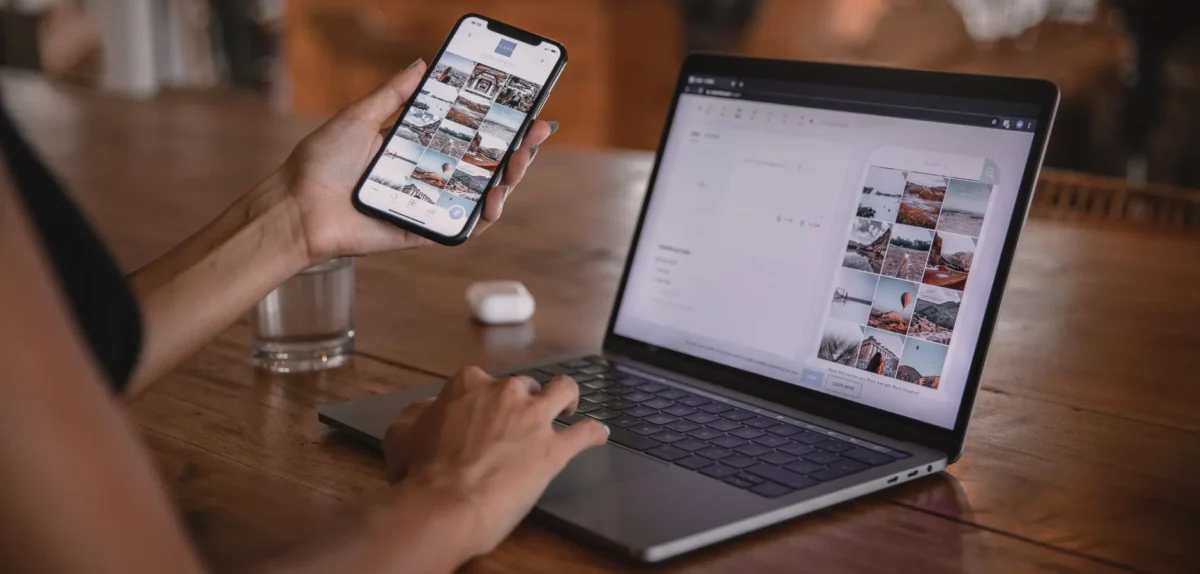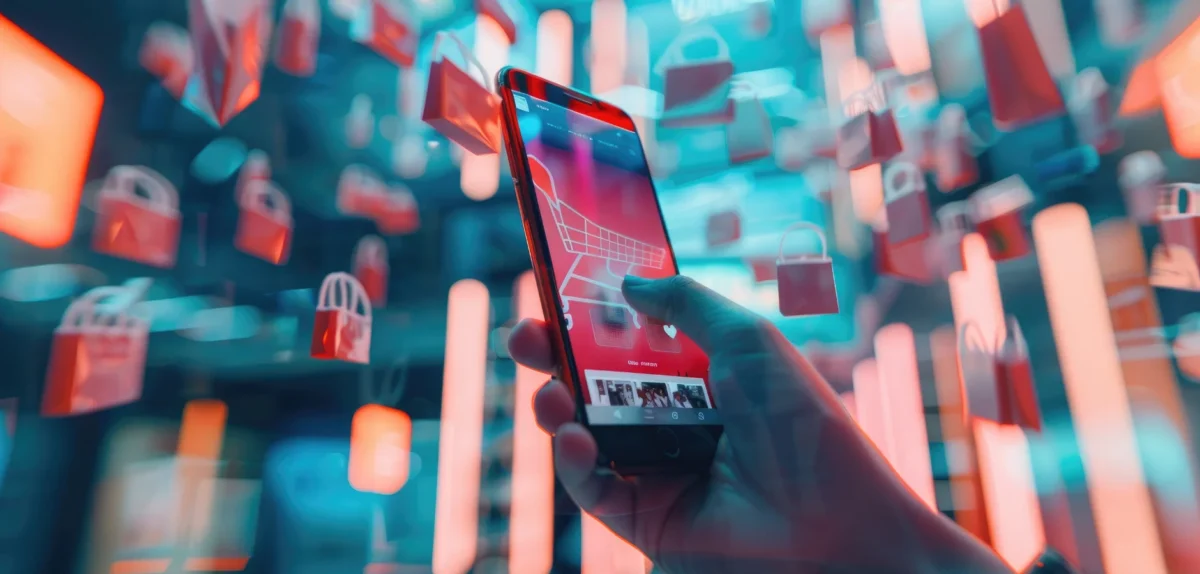Almost 70 percent of non-LGBTQIA+ people believe companies should publicly support and include the LGBTQIA+ community through practices like hiring, advertising, and sponsorships. With increased allyship for the LGBTQIA+ community, brands need to prepare for the influence this growing demographic has on the overall customer experience.
Authentic allyship beyond Pride Month introduces brands to invaluable benefits.
- Attracts and retains quality talent
- Improves brand image and reputation
- Creates social impact and corporate social responsibility
- Encourages brand loyalty
Besides being a revenue-generating channel, partnerships offer a genuine connection to customers and facilitate brand trust. Brands and partners identifying with the LGBTQIA+ community can collaborate to help reflect diverse values and establish authentic links.
Key takeaways from this blog
- Allies advocate, empower, educate themselves, and stand up for the LGBTQIA+ community.
- Embracing the diverse nuances of gender and sexual identity helps create more supportive and affirming spaces for genuine collaboration.
- Correct pronoun usage of people within gender-diverse communities signals respect and fosters an inclusive environment.
- Actively engaging with the LGBTQIA+ audience builds trust and fosters brand loyalty—resulting in increased engagement, reach, and visibility.
- Develop an inclusive partnerships strategy that reflects gender fluidity in product ranges, features diverse families, and tells more inclusive stories.
4 tips to help brands be more effective LGBTQIA+ ally
Use these helpful insights to gain a deeper understanding and acknowledgment of gender to avoid rainbow-washing and drive authentic collaborations.
- Create meaningful strategies by understanding gender
- Acknowledge pronouns for thoughtful communication
- Engage with the LGBTQIA+ community for greater understanding
- Increase LGBTQIA+ representation through authentic collaborations
1. Create meaningful strategies by understanding gender
LGBTQIA+ is an acronym that stands for “lesbian, gay, bisexual, transgender, queer (or questioning), intersex, and asexual.” Identity on the queer and trans spectrum is broad and constantly evolving. As such, these spectrums are represented by the plus sign.
An ally actively works to create an accepting and equitable space for LGBTQIA+ communities. True allies advocate, empower, educate themselves, and stand up for people around them. Additionally, LGBTQIA+ allyship means understanding that every person has their own gender and sexual identity journeys.
Sexual orientation refers to the physical, romantic, and/or emotional attraction that a person has toward others. It includes lesbian, gay, bisexual, and other straight orientations. Sexual orientation is separate from gender identity.
Gender identity describes how a person experiences and defines gender internally—male, female, neither of those, both, or other gender(s). It can also match or differ from one’s assigned sex at birth.
Content creator and LGBTQIA+ coach Drewski Parker (he/they) identifies as a proud queer and transgender man. A transgender man is someone who identifies as a man but was assigned female at birth. Their identity and experience have fueled their passion to help others trailblaze a path towards personal freedom and connection. They use various platforms to provide allyship tips and coming out support.
Source: @drewskiparker
Gender expression/presentation is how a person presents gender identity through clothing, mannerisms, grooming, make-up, etc. For instance, gender non-conforming writer and performance artist ALOK (they/them) use their platform to express and change fashion and beauty industry standards and norms.
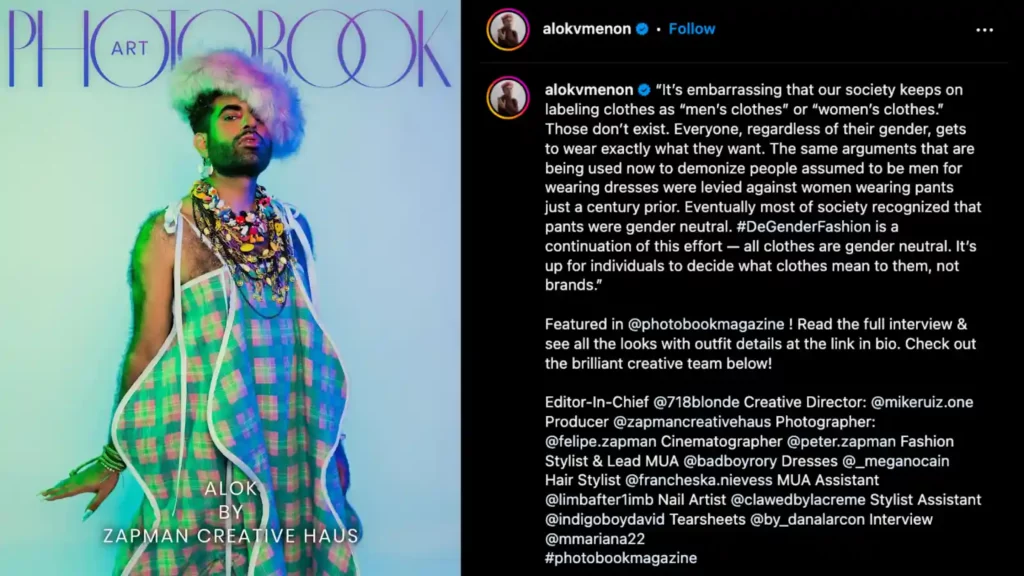
Source: @alokvmenon
Embracing the diverse nuances of gender and sexual identity helps create more inclusive, supportive, and affirming spaces for genuine collaboration. As the modern consumer embraces gender fluidity, brands must provide experiences that are inclusive of all identities and avoid stereotypical gendered marketing.
Partnerships offer a way for brands to promote diverse representation and challenge gender norms. Consumers enjoy a stronger connection with brands that value and see them.
2. Acknowledge pronouns for thoughtful communication
Gender pronouns are a set of third-person pronouns that communicate an individual’s gender identity. Correct pronoun usage of people within gender-diverse communities signals respect and fosters an inclusive environment.
People express pronouns by stating their subject, object, and possessive pronouns—’ she/her/hers,’ ‘they/them/theirs,’ or ‘he/him/his.’ Partners often display pronouns on their platforms as a chance to share their gender identity. For instance, Dexter Mayfield includes his pronouns on his Instagram bio.
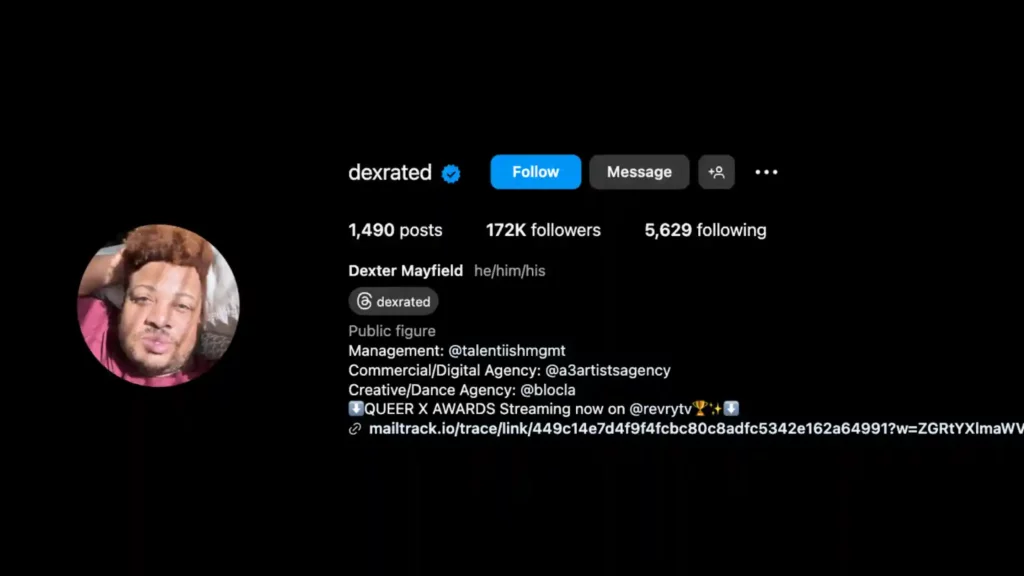
Source: @dexrated
However, certain digital interactions and in-person relations don’t often afford you access to personal information like pronouns. Assuming pronouns based on someone’s name, appearance, or behavior encourages gender stereotypes and the belief that gender is binary.
Follow these best practices for a more gender-inclusive approach to working with partners and avoid the risk of alienating potential customers.
- Use gender-neutral language in communications. When writing emails, use greetings such as “Hi all’ or address someone using their first and last name. Use pronouns such as ‘they,’ ‘them,’ and ‘their’ when referring to someone’s gender. When speaking to a group, choose terms such as ‘everyone.’
- Normalize the use of pronouns by sharing your own. Update your email signature, Zoom title, or Slack bio to include your preferred pronouns. Start conversations by introducing your pronouns.
- Create ways for people to express pronouns digitally. Give people control over their identity. Provide pronouns beyond the traditional she/her and he/him options in forms and documents. Remember that disclosing pronouns for some may be a source of anxiety, so don’t force this practice—instead, mark it as ‘optional.’
- Apologize for misgendering someone. Mistakes are inevitable. So, if you misgender someone, acknowledge your mistake and extend an apology. Then, correct yourself and continue with your conversation. Avoid prioritizing your own emotions to the extent that you downplay the significance of someone being misgendered.
3. Engage with the LGBTQIA+ community for greater understanding
For decades, the LGBTQIA+ community has shaped pop culture, music, fashion, and more. Beyoncė honored Black queer excellence in her 2023 Renaissance album, while the Met Gala pulled inspiration from queer fashion with the 2019 ‘Camp: Notes on Fashion’ theme. Brands wishing to be at the forefront of innovation and creativity must immerse themselves in the community.

Actively engaging with the LGBTQIA+ audience builds trust and fosters brand loyalty—resulting in increased engagement, reach, and visibility. Understanding their needs and preferences enables you to create captivating messaging tailored to their interests.
Consider how your brand can better understand and appreciate the LGBTQIA+ community.
Participate in advocacy efforts to learn about unique challenges. Help LGBTQIA+ rights organizations and queer-owned businesses. Align with groups that prioritize support for LGBTQIA+ individuals belonging to historically marginalized communities—such as BIPOCs (Black, Indigenous, and other People of Color, including Asians, Latine, and Middle Eastern/North African (MENA). Advocacy through an intersectional lens empowers purpose-driven allyship with greater intention and impact by understanding the following:
- BIPOCs experience discrimination along multiple lines of identity. For example, A South Asian lesbian woman may face racial/ethnic, gender, and LGBTQIA+ stigma.
- Unique strengths exist at the intersection of race/ethnicity and sexual/gender identities.
Organize LGBTQIA+ events for deeper insights into community needs. The LGBTQIA+ community calendar includes Lesbian Visibility Day, Intersex Awareness Day, and LGBTQIA+ Families Days. Consider following creators like Not Str8ight (he/him), who provide updates on LGBTQIA+ events and history. Celebrating individuals across the rainbow spectrum showcases the diverse fabric of the community, encourages meaningful inclusion, and promotes powerful messaging.
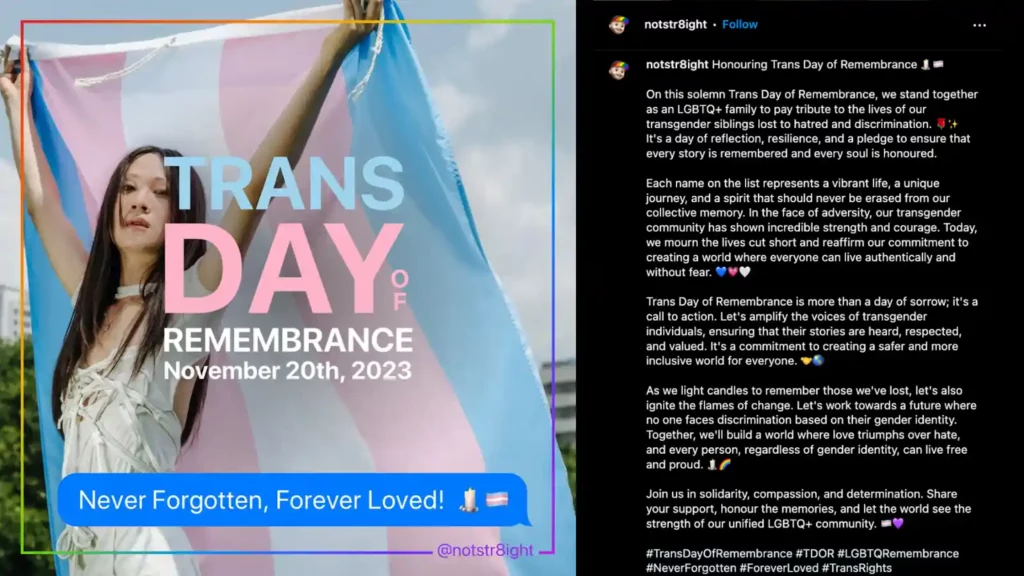
Source: @notstr8ight
Follow LGBTQIA+ activists to ensure continuous learning and adaptation. Joining activists like Yasmin Benoit and Raquel Willis places you at the heart of thought-provoking conversations. Engage authentically with the ever-evolving LGBTQIA+ audience by staying informed about trending discussions that resonate within the community.
4. Increase LGBTQIA+ representation through authentic collaborations
LGBTQIA+ partners and creators take up space in various industries. For instance, Andrew Goodman has a Twitch channel, Goody Good Gaming, which boasts an inclusive LGBTQIA+ environment. Partnerships offer brands a genuine link to the LGBTQIA+ community and an opportunity to amplify diverse voices.
Take into account the following considerations when developing an inclusive partnership strategy.
Reflect gender fluidity in your product range. Offer and market inclusive products that cater to a wide range of gender expressions. This approach enhances the quality and accessibility of your brand’s offerings. For example, Tiffany Der (they/them) became an ambassador partner for Dapper Boi, a genderless fashion brand designed for AFABs (assigned female at birth)/ masc presenting bodies.
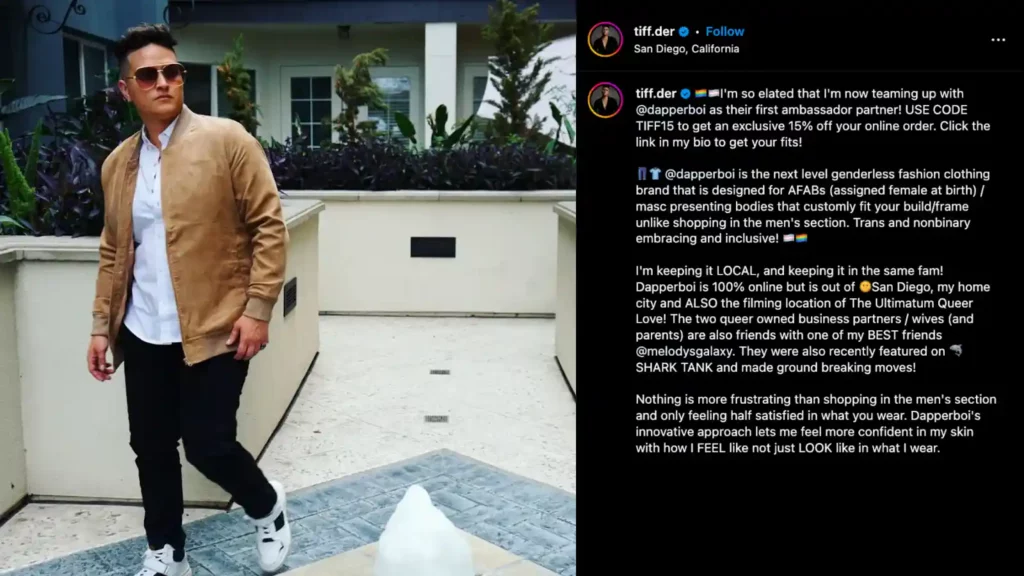
Source: @tiff.der
Feature inclusive families. LGBTQIA+ individuals fulfill various roles, including spouses, parents, and siblings. They contribute to the diverse fabric of relationships and family dynamics. Showcasing these bonds helps break stigmas and forms stronger connections with the community. Find creators such as Melissa Lee (she/her), who shares her motherhood and family experience.
Source: @missyhalle
Tell more inclusive stories. Storytelling is a powerful way to celebrate and center inclusive experiences. Look for LGBTQIA+ creators and influencers who can authentically share their stories and help raise the community’s visibility. For instance, tech enthusiast Justin (he/him) reviews the latest tech innovations and raises diabetes awareness through his lived experience.
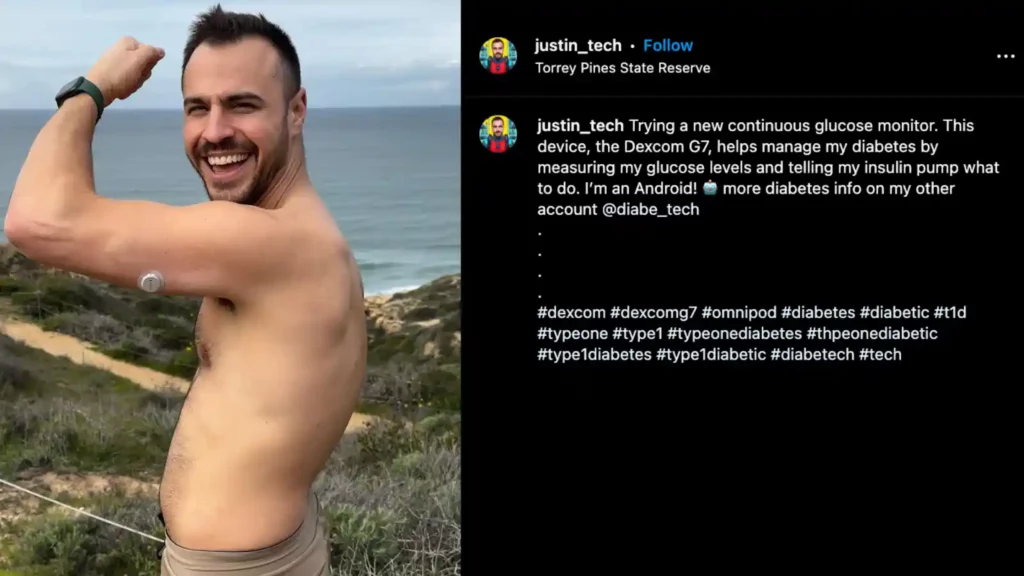
Source: @justin_tech
Conduct market research on the LGBTQIA+ community. Actively seek feedback from the community. Send surveys, host focus groups, or tap into your partners to discover if your brand aligns with their preferences. Use the insights to fine-tune your strategy and establish deeper connections with your audience.
FAQ
LGBTQIA+ is an acronym that stands for “lesbian, gay, bisexual, transgender, queer (or questioning), intersex, and asexual.” Identity on the queer and trans spectrum is broad and constantly evolving. As such, these spectrums are represented by the plus sign.
An ally actively works to create an accepting and equitable space for LGBTQIA+ communities. True allies advocate, empower, educate themselves, and stand up for people around them. Additionally, LGBTQIA+ allyship means understanding that every person has their own gender and sexual identity journeys.
Use the following insightful tips to gain a deeper understanding and acknowledgment of gender to avoid rainbow-washing and drive authentic collaborations. Create meaningful strategies by understanding genderAcknowledge pronouns for thoughtful communication Engage with the LGBTQIA+ community for greater understandingIncrease LGBTQIA+ representation through authentic collaborations
Show your true colors with authentic allyship
Recognizing the diversity of gender identity is the first step to implementing an LGBTQIA+ inclusive partnerships strategy. By consistently investing in the LGBTQIA+ community year-round, your brand can cultivate a culture of inclusion, promote real change, and build genuine allyship.
Check out these additional resources to help create inclusive partnerships:


